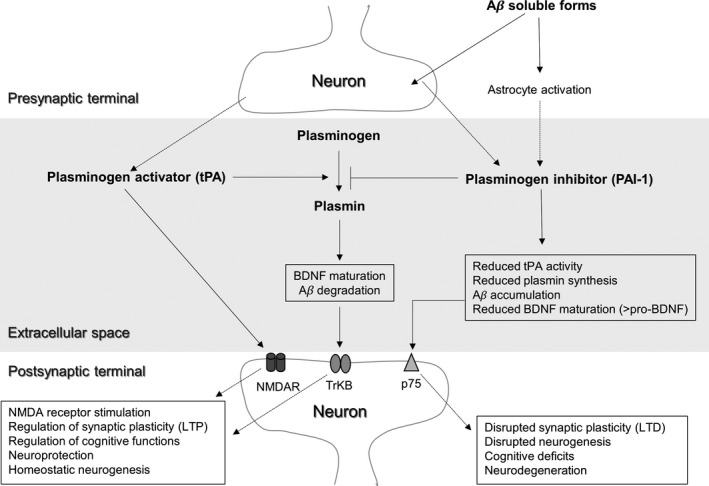Figure 1.

Relationship between plasminogen activation system and BDNF at the synaptic level. tPA and PAI‐1 may be released into the extracellular space where plasminogen is also present. tPA can influence synaptic activity by two ways: (1) by binding directly to specific subunits of NMDA receptors and (2) by increasing the levels of plasmin, which in turn leads to increased BDNF maturation and increased synaptic activity (LTP) after binding with the TrkB receptor. PAI‐1 inhibits tPA activity, thus reducing the synthesis of plasmin and the maturation of BDNF. In the context of Alzheimer‘s disease, elevated PAI‐1 levels may account for increased Aβ accumulation and increased pro‐BDNF, which reduces synaptic function (LTD) after binding with the p75 receptor. Long‐term consequences may include cognitive deficits and fostering of neurodegenerative processes
